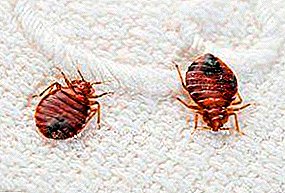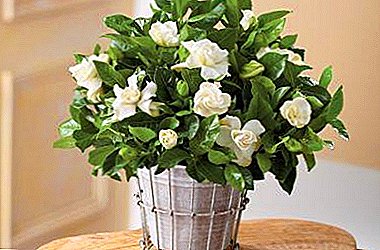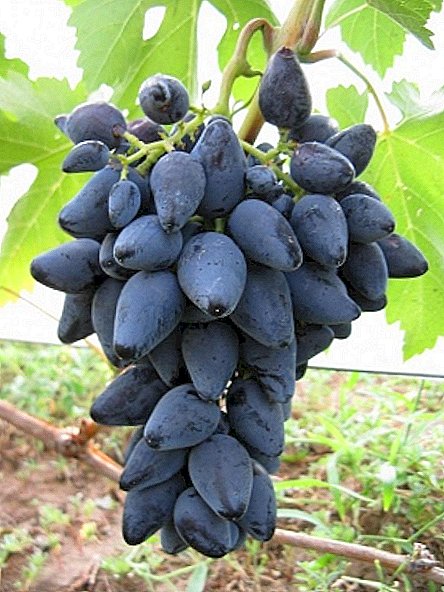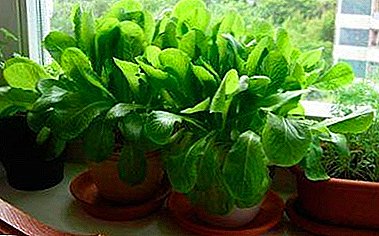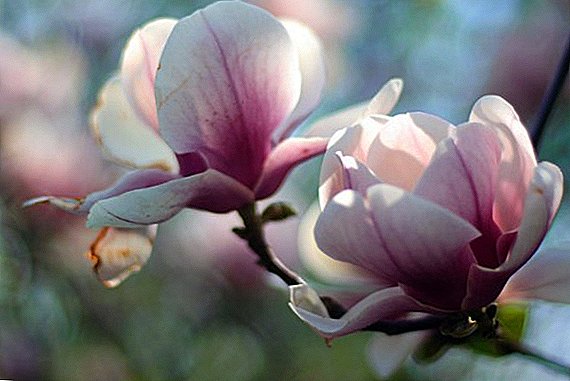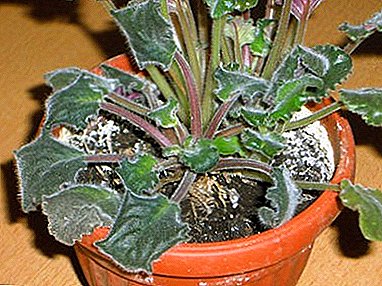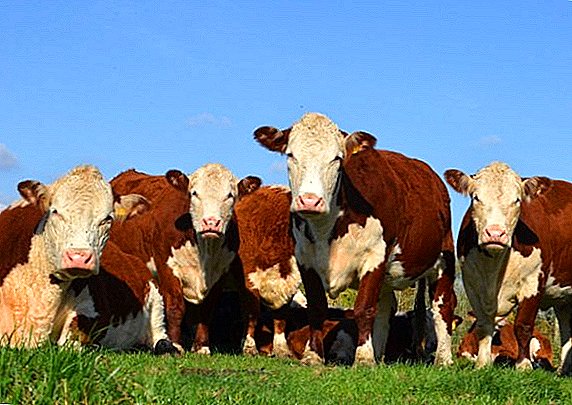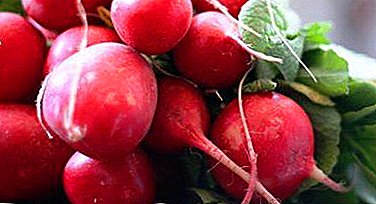 The appearance of most vegetable gardens does not change over the years - each crop has its own place, from which it practically does not move. Such agricultural technology gives stable yields, but does not take into account the fact that the composition of the soil can change, and the plants should be alternated, placing them on a more suitable "patch". Those who want to harvest a large crop, try to put into practice new concepts of dacha farming. We learn more about one of these approaches, having considered what permaculture is, how to implement such a direction.
The appearance of most vegetable gardens does not change over the years - each crop has its own place, from which it practically does not move. Such agricultural technology gives stable yields, but does not take into account the fact that the composition of the soil can change, and the plants should be alternated, placing them on a more suitable "patch". Those who want to harvest a large crop, try to put into practice new concepts of dacha farming. We learn more about one of these approaches, having considered what permaculture is, how to implement such a direction.
What is it?
This method involves designing a site based on natural ecosystems. His goal is to create a harmonious system, each of the elements of which is associated with the other. An important role is assigned to the observation, the results of which suggest what changes to make to the usual layout. Yes, it looks like some kind of philosophy. If it is simpler to say, then in the permaculture of the garden or the garden, the role of a peculiar constructor composed of the most suitable plants is assigned. To them, the adherents of this method also add animals and various buildings. And all this should not interfere with a friend, but, on the contrary, supplement it.
Important! It is useful to determine the acidity of the soil. There is a simple way: putting the glass on a dark surface, pour 1 tsp on it. soil, lightly watering it with 9% vinegar. Sour soil will not give foam, while alkaline soil will produce a rich and thick “cap”.The cornerstone of this approach is the understanding of local conditions and characteristics of the garden itself. That is, all factors are taken into account - the number of sunny and rainy days, the duration of summer, the presence and habits of animals.
Note and focus on the use of biomaterials - all sorts of chemistry is excluded. 
History of origin
The idea of continuous culture in agriculture interested biologists and agronomists in the early twentieth century. It was then that the question of abandoning plowing was raised, which had quite a few followers. They argued that such a cultivation of the land in such a way would inevitably lead to the appearance of deserts in the place of fertile fields.
Did you know? One of the first ecovillages is back in 1968 Acroville. Currently, about 1,200 people of 30 nationalities live in this “City of Dawn”.The turning point was the turn of the years 1960-1970. At that time, the pace of plowing, as well as the use of herbicides reached its peak. An opposition was formed among agronomists, which began to resurrect the forgotten principles of permanent cultivation and develop a stable system.
The first principles of productive organic farming were laid out by the Japanese farmer and microbiologist Masanobu Fakuoka. In the book "The Revolution of a Straw" (1975), he summarized his experience - at that time, the author had not plowed the land on his plot for 25 years. This work is considered fundamental to the whole direction.  In 1978, the first volume of the book "Permaculture" was published, the authors of which were Australians David Holmgren and Bill Mollison. The publication found a wide response, already in the 80s the first eco-settlements appeared - the idea went beyond the framework of agriculture and began to touch on the issues of design and construction.
In 1978, the first volume of the book "Permaculture" was published, the authors of which were Australians David Holmgren and Bill Mollison. The publication found a wide response, already in the 80s the first eco-settlements appeared - the idea went beyond the framework of agriculture and began to touch on the issues of design and construction.
New works on the issue of "eco-processing" appear regularly. Permaculture based on the experience of Sepp Holzer is very popular in our area. The Austrian farmer first drew attention to the "heavy" soil and housekeeping in adverse weather conditions, writing a number of books.
Learn how to plan a plot, how to level a plot at a dacha, how to build a cellar, how to make rockeries and a dry stream, how to make a gazebo to give, how to design a garden.
Basic principles
Now let's find out how this theory is embodied in practice, on what principles this "agro-education" is based. Note that for a person with traditional views of the garden such postulates and techniques will look somewhat unusual, but there is a rational grain in them. 
Balanced ecosystem
The main role is played by the smooth interaction of all components of the site. Permaculture relies on:
- The most productive combination of all elements. A simple example is the layout of the chicken pen. It should be placed closer to the beds with vegetables. As a result, the weeds and some parts of the plants will go to feed birds, and the litter they developed is used as fertilizer.
- The principle of natural diversity - all elements complement each other, and do not share.
- Multifunctional. If we take branches of trees, then they will be not only fuel, but also mulch, enriching the soil with nitrogen.
- For better planning, it is necessary to know all the agrotechnical characteristics of a particular plot — how often and how it was fertilized before, which varieties were planted, what the weather was like and similar nuances.
- Rational use of solar energy (therefore there are a lot of greenhouses on such sites) and rainwater harvesting with minimal losses. We'll have to think about the location of large-capacity storage drums and gutters.
Important! The strategy of continuous farming does not provide for autumn harvesting of leaves, and moreover, its burning.As you can see, permaculture is unthinkable without a competent combination of available resources, including natural ones.
Use of natural resources
Of course, it should be as effective as possible. In the course are only renewable resources. In many ways, this explains why such eco-settlements are densely planted with trees and grass.
Did you know? For a long time, the World Network of Ecosettlements has been operating, which has regional offices in Europe, Asia and America. There can join as national associations, and some large settlements.Trees give crops, give shade in hot summer and purify the air. Old or sick specimens are used as material for the manufacture of chairs and other items. Having started them on a mulch, you thereby promote transformation of the soil.
This has a beneficial effect on the grass growing nearby - the so-called border effect is obtained.  And there are plenty of such examples. Non-renewable types of raw materials try not to use or to reduce their use to a minimum. The same coal, for example, is taken in extreme cases.
And there are plenty of such examples. Non-renewable types of raw materials try not to use or to reduce their use to a minimum. The same coal, for example, is taken in extreme cases.
No waste
Everything is simple here - everything that can be recycled is reused. Shrunken grass, branches, paper, cleaning from the kitchen start up in a "new" business, but in a different incarnation. This is a fairly time-consuming process, but the result will be a clean area without garbage "islands."
In addition, many of the waste received during the season can be stored in a compost pit, where they will be processed by worms and some time later will be used for fertilizers for beds. This is how another principle is implemented, namely the use of the natural circuit.
Do not forget more difficult cases. Inhabitants of ecovillages emit only completely broken machinery, which is no longer subject to repair. 
Site design and zoning
Design should combine beauty and practicality, and the permacultural approach in this regard will not be an exception. Planning planned in such a way as to eliminate unnecessary movement, thereby facilitating the work. It is convenient, especially in large areas.
Important! Mixing tree and grass crops is considered mandatory. It can be said that Japanese gardens are ideal in this respect.The whole garden is conditionally divided into five zones, which differ in the frequency of visits. Here they are:
- Garden and chicken coop (1 and 2) near the house. Most of the work is carried out here. Greens are planted on their border, which can be used to feed poultry.
- On the "frontier" of 2 and 3 zones, garden trees are planted, which are replaced by "industrial" breeds, giving food and materials.
- Pastures for livestock (zone 4) are taken out "for the fence."
- Zone 5 is rarely visited. These are hay fields located near forests.
 Here one more peculiarity of this way of farming is manifested - it is more designed for large communities with vast lands.
Here one more peculiarity of this way of farming is manifested - it is more designed for large communities with vast lands.A private owner on 6 acres does not threaten such a scope, although he, if he wishes, can bring the cottage up to the level of a natural ecosystem.
The main thing - to calculate all the features of the soil and the location of buildings.
Then you can equip the house territory, plant the beds and garden in accordance with all the principles of permaculture.
Buildings from natural materials
We already know that we need only natural resources, and in the first place - wood.  It will be the basis for the construction of a house, shed or arbor. With large-scale construction take timber. Most often it is pine raw. It has many advantages, among which prevalence and low cost stand out.
It will be the basis for the construction of a house, shed or arbor. With large-scale construction take timber. Most often it is pine raw. It has many advantages, among which prevalence and low cost stand out.
With spruce a little harder - the wood is more friable, although it keeps the heat better. And the best of the available options will be larch, which is durable. For additional insulation take moss, replacing glass wool.
Did you know? One of the first community-type ecovillages in Russia was the village of Kitezh, which began to be settled in 1992. Together with him in the first wave of the early 90s were Tiberkul, Grishino and Nevoekovil.On the site can be located and other objects, when laying which try to avoid the use of synthetic materials. This concerns, first of all, ponds. Ideally, they should be purely soil, without a concrete "sole" and film coating.

Digging refusal
The main agrotechnical technique that causes heated debate. It implies the rejection of any turning and loosening of the soil, no matter how - with a shovel or plow.
Proponents of this method see it as an opportunity to restore the balance of the soil, which is impossible with traditional processing. They have reasonable arguments, including the fact that over time, the natural loosening of the soil is improved through the activity of worms.
Add here the problem of weeds, which eventually disappear - and the benefits of this technique will become apparent.
This is true, but it will take more than one year to get the right balance, which discourages many. Although for a natural (that is, a small household) economy, such radical changes are often imperceptible - the yields remain the same.  But the complexity of growing gradually decreases, which is also a plus.
But the complexity of growing gradually decreases, which is also a plus.
Use straw
It is applied very widely.
First of all, it is an excellent material for mulch. It decomposes quite quickly, so you can lay a thick layer. Moisture and oxygen at the same time pass to the ground without difficulty. In the summer, they put it on vegetable or berry beds, and in the cold season they cover tree trunks of shrubs and trees.
Straw is also used for planting potatoes, for growing champignons, for mulching strawberries and as a fertilizer.In addition, the straw also serves as "building material" for vegetable beds. Do them like this:
- Take bales harvested from the summer without hay impurities (weed seeds may be in it).
- In the autumn, tied bales of twine or twine are laid out in rows, with a row spacing of 55-70 cm. Cardboards or old paper are put under them.
- Straw is plentifully watered with bird droppings, maintaining humidity until the first frost.
- In the spring (about a couple of weeks before planting), bales are watered and fertilized with a mixture of wood ash, bone meal or litter, mixed in equal parts.
- Before planting, wells are made, sometimes adding a few handfuls of earth for better rooting. Seeds or seedlings sprinkled with a small layer.
- It remains to be watered in time and, if necessary, to put tapestries for the climbing varieties.
 After harvesting the straw will be rotted, it can be left for mulch or sent to a compost pit.
After harvesting the straw will be rotted, it can be left for mulch or sent to a compost pit.Important! This method is distinguished by the flexibility of crop rotation - the “composition” of plantations, if necessary, changes immediately, without any particular complications. The loss of several types is compensated by the general riot of the site.
How to start a newbie?
Interested in permaculture, many are thinking about using it from scratch.
Say at once - have a fair patience.
This is due to the fact that it is necessary to radically change not only the style of farming.
One rejection of plowing here will not do, you need to thoroughly prepare the site itself. Agrotehnika "according to Holzer" is reduced to the use of long-terraced terraces and beds of complex shape (usually spiral). Consider whether you can equip them in a small garden. 
To soberly assess your strength, pay attention to the following points:
- Even before the transition to a new technique, look at the neighboring dachas - what exactly is growing there, and which varieties are accepted reluctantly. Pay attention to what forms of "neighborhood" between different varieties are most common. This will allow you to choose the right material for planting.
- Think over to the details of the future layout with reference to specific conditions (area, relief, location of buildings and drainage).
- Do not be afraid of the diversity that distinguishes the ecosystem. This is unusual, because many of the plants traditional for eco-settlements are considered weeds.
- Thoroughly calculate all water supply options, paying attention to the minimum fluid loss. The same goes for heat.
- If there are chickens or cattle, correct the location of the beds for them. So it will be easier to make the resulting fertilizer.
Did you know? Philosophical eco-villages are gradually being superseded by family estates, which give a good income. This trend has been observed for the past 15 years.Before turning to the implementation of all the above principles, think again whether it is worth taking up such a troublesome job. For this it is necessary to take into account all the pros and cons of such a decision.

Advantages and disadvantages
Supporters of the "mixed fit" idea put forward such arguments in its favor:
- obtaining environmentally friendly products;
- reduction of technogenic load on the ground;
- almost complete "self-regulation" of the soil, which allows for a long time to do without abundant fertilization;
- no waste, everything goes into business.
- less labor intensive;
- good and stable yields;
- minimum cost of caring for plants.
- Finally, it is very beautiful.
Important! Implement such an innovative method is better in a well-protected area, which excludes the appearance of uninvited guests.But there is another point of view. Many believe that the practical use of "clean" permaculture in our conditions gives a dubious effect to the garden. Among their arguments, the most common ones are:
- the complexity of the transition to a new model on a small "patch";
- high labor intensity at first;
- long waiting for a bountiful harvest;
- the inability of many varieties to prolonged cold and early frosts;
- the need for frequent presence in the country, which is not always realistic.
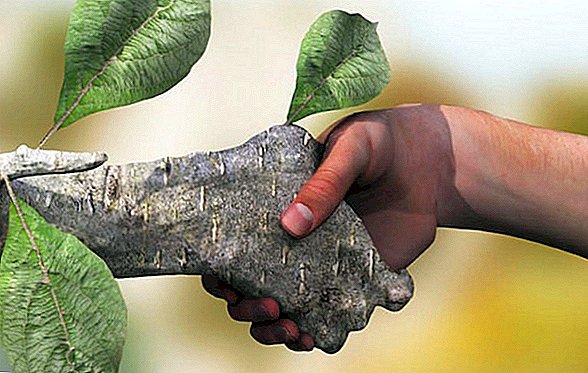 To use all these things or not is not a matter of taste, but of possibilities. There is one more, purely psychological moment. If you are still determined to arrange a "forest" in the middle of the dacha cooperative, try to explain to your neighbors that such lush vegetation is not weeds.
To use all these things or not is not a matter of taste, but of possibilities. There is one more, purely psychological moment. If you are still determined to arrange a "forest" in the middle of the dacha cooperative, try to explain to your neighbors that such lush vegetation is not weeds.Thus, it will prevent potential conflicts.
You have learned the differences between green permaculture and traditional farming.
We hope this data will clarify and help determine the most appropriate type of housekeeping. More variety and record harvests!


